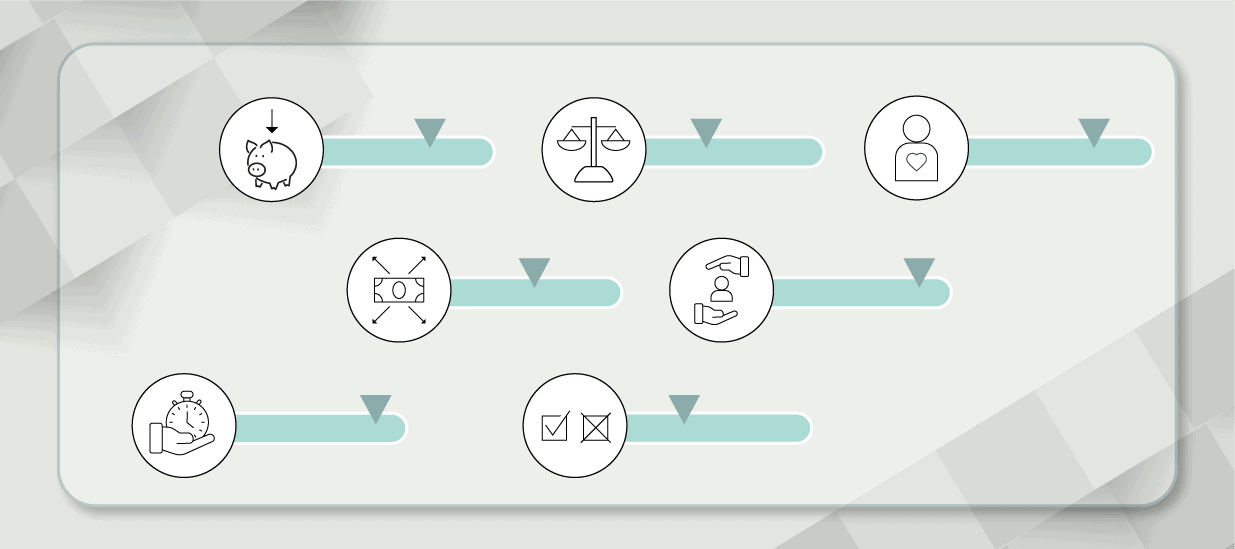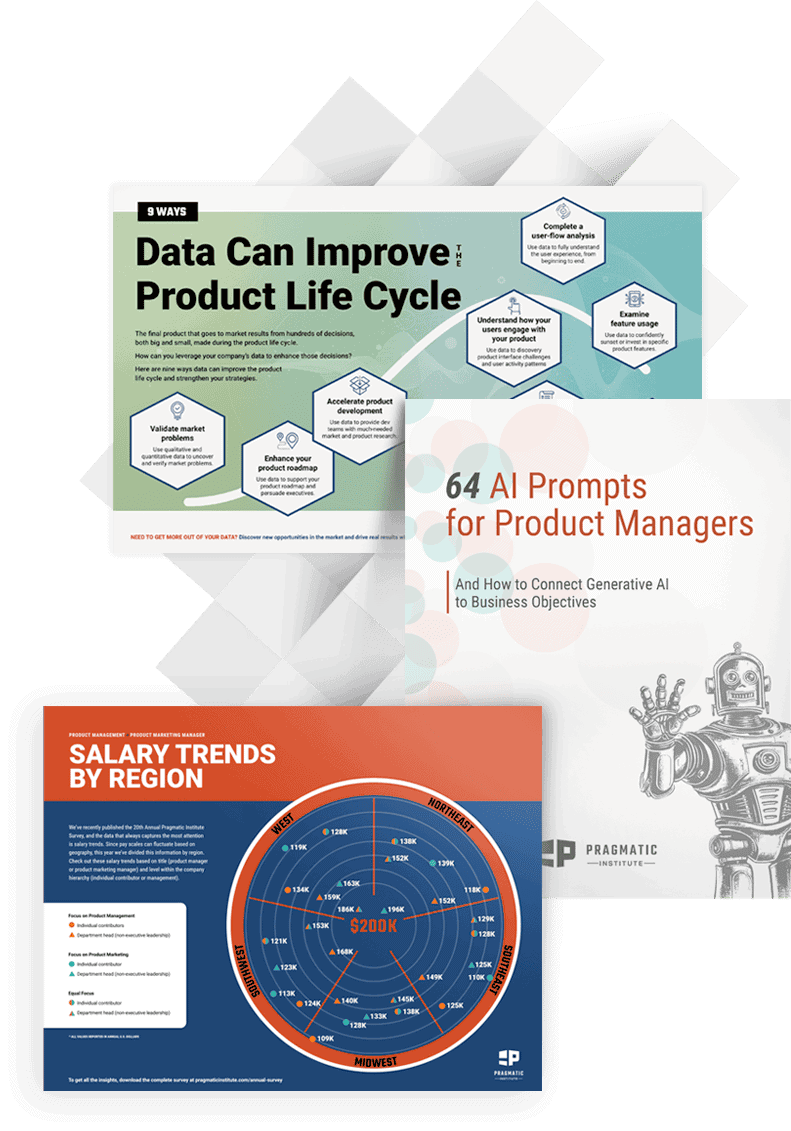7 minute read
This article explores seven essential metrics product marketers can use to evaluate performance and measure how they support business goals.
Product marketers are crucial in bringing a product to market and ensuring its success after launch. Their efforts are integral to the company’s bottom line. These 7 metrics can demonstrate how product marketers support products and drive growth, underscoring their value and importance.
Ready to dive in? Use the links below to jump to the section that most interests you.
What are product marketing metrics?
Product marketing promotes a product to its intended market. A product marketer’s responsibilities might involve developing a product positioning strategy, setting marketing campaign tactics, and collaborating with sales teams to prove sales enablement resources. Product marketing metrics are essential to help product marketers measure the success of their work. Key performance indicators (KPIs) describe metrics that track performance over time and measure the long-term performance of product marketing and its impact on organizational goals. Every KPI is a metric, but not every metric is a KPI. You can select KPIs that make the most sense for your organization.
Why are product marketing KPIs important?
Metrics and KPIs are important because they help product marketers measure the impact of their work. Sometimes, that can look at the success of specific messages, assets, or campaigns. However, it’s also important to broaden the scope to understand how product marketing supports big-picture company goals like driving sales, generating revenue, and attracting and retaining customers. By measuring and tracking product marketing’s impact on the bottom line, product marketers can prioritize the most impactful markets, tactics, and outcomes for the business overall.
7 Essential Product Marketing Metrics
When you measure product marketing, your goal is to measure its contribution or the impact product marketing is expected to have on a business. You’ll demonstrate how product marketing supports sales of the product, adoption among the target market, and retention of current customers. In turn, those product goals should support organizational goals of increasing revenue, driving sales, and growing the customer base. These metrics are not just numbers, but they are indicators of how well your product marketing strategies are aligning with and contributing to the overall business objectives.
1. Adoption + Adoption Rate
Adoption means how many customers are using the product and its specific features. Product adoption helps you understand if the customer uses the product regularly and has made it a part of their routine. It doesn’t help to build products and features that customers use once and then put on a shelf. High adoption is correlated with higher retention and lower churn and may be a leading indicator of future retention issues.
Similarly, the Adoption Rate measures the ratio of customers using a product or a set of features against your total customer base. A low Adoption Rate could signal a problem for your product and product marketing strategy. Customers may use it initially but don’t see its long-term value. Conversely, as the Adoption Rate increases, there is a higher probability of renewal and a higher Retention Rate.
Questions to ask about Adoption Rate:
- Were features built for a handful of big customers who demanded them, but the rest of the customer base doesn’t need them?
- Is it a new product that gets initial attention, and then customers lose interest? Why?
2. Retention + Retention Rate
Retention refers to how many customers stick around. Retained customers continue to use the product after they adopt it, potentially by renewing paid maintenance for on-premises products or renewing licenses for subscription-based SaaS products.
By extension, the Retention Rate tells you how many customers remain customers at their time of renewal. An ideal retention rate is 100%. While that may not be a realistic goal, product teams want to achieve a high retention rate. That’s because attaining a new customer takes far greater effort than retaining one.
Here is a formula to help calculate Retention Rate:
(Customers at End of Period – New Customers During Period) / Customers at Start of Period
Let’s say you have 1,000 customers and a Retention Rate of 85%. That means at the end of the year, you will have 850 customers. Now, let’s assume you want to grow your customers by 30%. If you are trying to grow at a 30% growth rate, you will need to acquire not only 300, which is 30% of 1,000 customers. You will need 450 new customers because you lost 150 due to the 85% retention rate and will need to acquire 300 new customers. Even minor improvements in the Retention Rate yield big returns and reduce workload.
Questions to ask about Retention and Retention Rate:
- Look at the Retention Rate over the last few years. Has it changed for the better or the worse?
- Does the Retention Rate vary across market segments? Why?
Churn + Churn Rate
Churn is the opposite of Retention. It is the discrete number of customers you have lost. Therefore, the Churn Rate is the opposite of the Retention Rate because it is the rate at which customers are no longer customers by the time of their renewal or choose not to renew. Churn Rate and Retention Rate have an inverse correlation because as one goes up, the other goes down. Understanding and reducing your Churn Rate is crucial for maintaining a healthy customer base and reducing the need for constant customer acquisition.
For Churn Rate, it will take more selling effort to acquire new customers and replace lost customers. You may also need to invest more effort into maintaining your current customers to prevent churn.
3. Revenue
Revenue measures the income generated by sales of a product. Revenue is a product goal that connects directly to overarching business goals. Of course, metrics like engagement or brand awareness are helpful for product marketing, but product revenue directly affects the bottom line. As a product marketer, tracking revenue can provide great insight into the effectiveness of your product marketing and the product-market fit. It’s essential to understand the revenue goal and to be able to track your revenue against the revenue goal.
Average Selling Price (ASP)
You can explore Average Selling Price (ASP) to understand Revenue better. The average selling price is the average price at which a specific product sells over a period of time. ASP may be easier to calculate for established products, but for new products, you can start with a set of assumptions and then track the selling price over time to calculate the average.
You can also dig deeper into ASP to understand whether it varies across market segments. It can be particularly insightful if sales teams sell your product to specific customers. Understanding the average selling price and any market variability can help you identify any possible unrealistic revenue targets and can help you plan pricing and product marketing strategies. For example, if you know that over the last 5 years, your ASP has been $1,000, dramatically increasing your product price to $5,000 would likely create sticker shock, scaring away new customers and risking churn.
4. Average Length of a Sale
The Average Length of a Sale is the time from initial contact by a qualified buyer to completion of the sale. While the Average Length of a Sale is primarily a sales team metric, it can provide helpful insights for the product marketing team. Average Length of Sale means your sales team has to work harder to achieve revenue targets. A decreasing Average Length of Sale means your sales team can sell more with fewer resources and inform product marketing’s efforts to build awareness of the product or inform sales enablement tactics to help move buyers from prospect to close quicker.
Questions to ask about the Average Length of a Sale:
- Is the Average Length of a Sale consistent across market segments? Is it trending longer or short?
- Are market segments with a much shorter (or longer) Average Length of a Sale? Why?
5. Close Rate
The Close Rate is the percentage of customers who complete a purchase. The Close Rate can highlight marketing performance and sales performance gaps. Poor product-market fit, improper targeting of potential buyers, or ineffective sales enablement could be linked to a low Close Rate.
Close Rate is calculated this way:
Conversions / Total Leads
For example, if you had 12,000 interested leads and generated 3,000 conversions, you have a close ratio of 25%: 3,000 / 12,000 = .25
Similar to Retention Rate, small improvements to the Close Rate can have significant business impacts. Increasing the sales team’s throughput lowers costs and uses fewer resources. So, product marketing may investigate ways to strengthen the relationships between product, marketing, and sales.
Questions to ask about Close Rate:
- Is the Close Ratio consistent across market segments, or do you see variations?
- Are there market segments with higher Close Ratios? Why?
6. Customer Lifetime Value (CLV)
Customer Lifetime Value (CLV) is the total profit a customer delivers over time. CLV refers to how much profit you make, from when a customer buys with you to when they churn. The goal is to increase CLV because you can profit more from each customer. Not all revenue is good revenue, so CLV might inform the markets you pursue, your product positioning strategies, and the channels you leverage to connect with those customers.
- Are some customers more valuable than others, and why?
- Are there any customers that cost your organization more than the revenue they make you?
- How much would you be willing to spend to attract a new high-CLV customer (or keep one)?
7. Customer Acquisition Cost (CAC)
Customer Acquisition Cost (CAC) is the total cost to acquire a single customer. Getting a customer to say ‘yes’ takes time, money, and resources. How much does that cost your organization?
CAC can vary dramatically between markets. This variance may be expected in some cases, like entering a new market segment where your organization has little visibility. In other cases, it might be an early-stage company investing heavily now to grow fast. The goal is to reduce CAC over time because you will spend less money and use fewer resources more efficiently. Lowering CAC might involve improving market or audience targeting, optimizing campaigns to improve incoming lead quality, or streamlining marketing and sales processes with more efficient tools or automation.
Questions to ask about CAC:
- Is there an outlier market segment where you spend much more than other market segments? Why?
Summary
By tracking these metrics over time, any product marketer can better grasp the effectiveness of their marketing initiatives. They also provide an objective way to evaluate product marketing’s alignment with and impact on the company’s broader goals.
Author
-

The Pragmatic Editorial Team comprises a diverse team of writers, researchers, and subject matter experts. We are trained to share Pragmatic Institute’s insights and useful information to guide product, data, and design professionals on their career development journeys. Pragmatic Institute is the global leader in Product, Data, and Design training and certification programs for working professionals. Since 1993, we’ve issued over 250,000 product management and product marketing certifications to professionals at companies around the globe. For questions or inquiries, please contact [email protected].
View all posts








